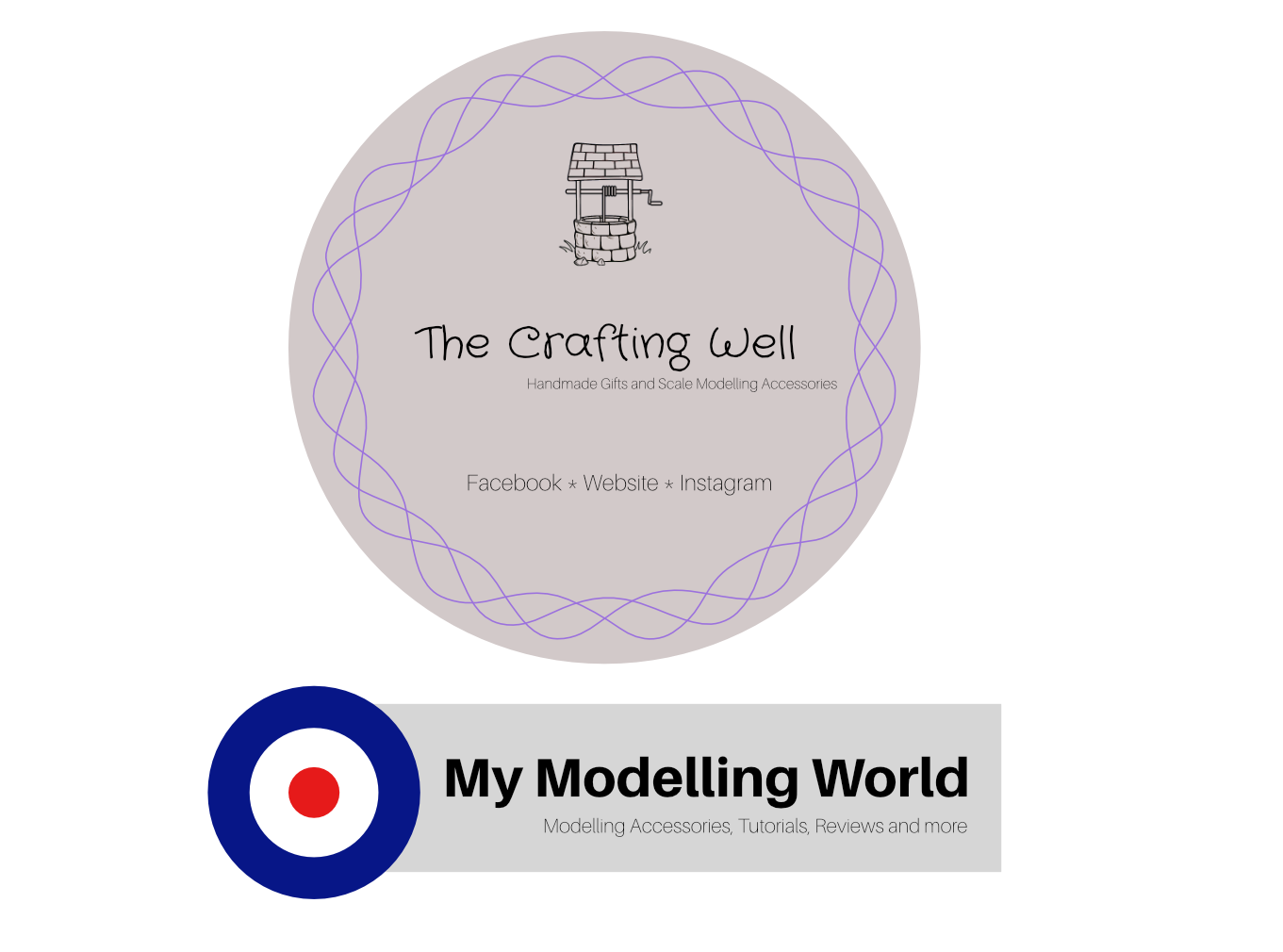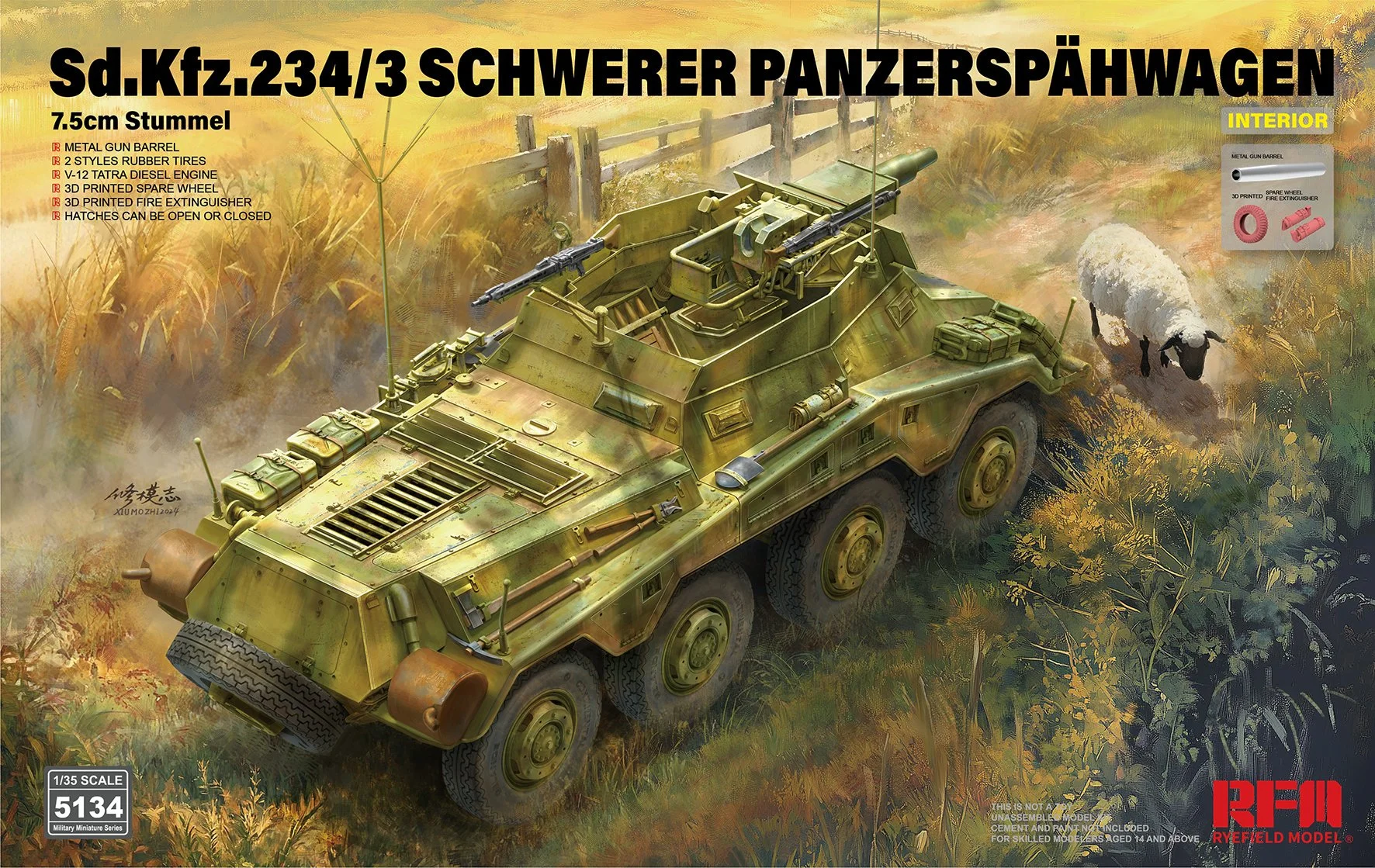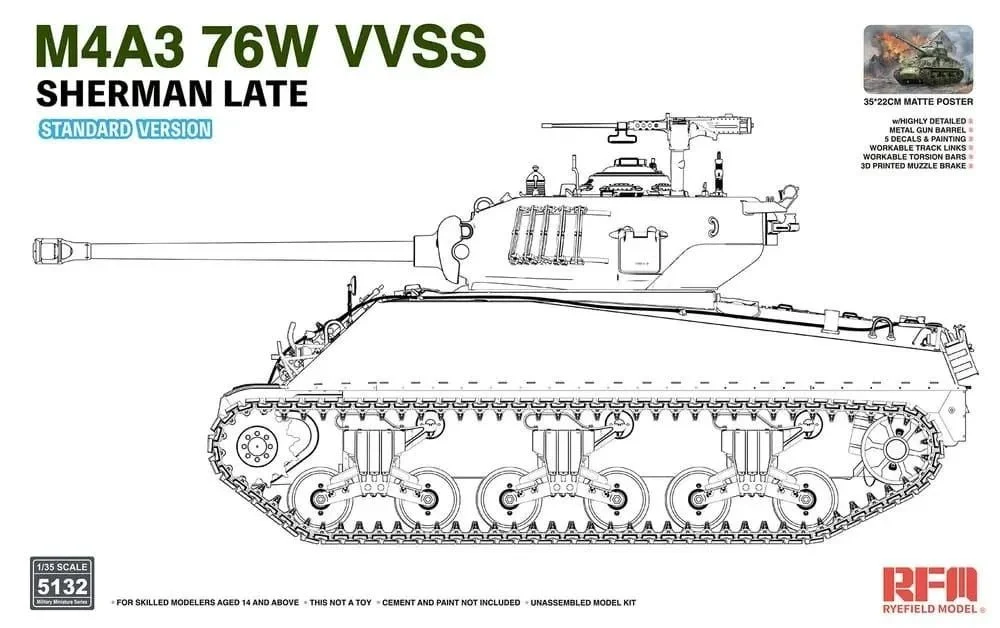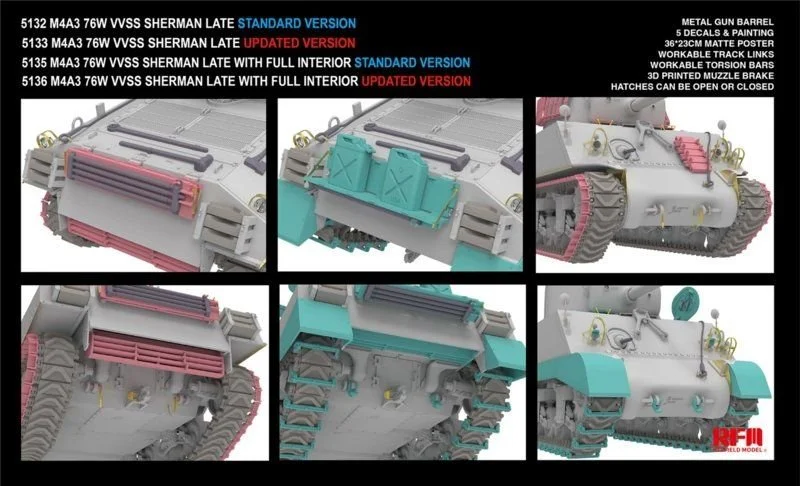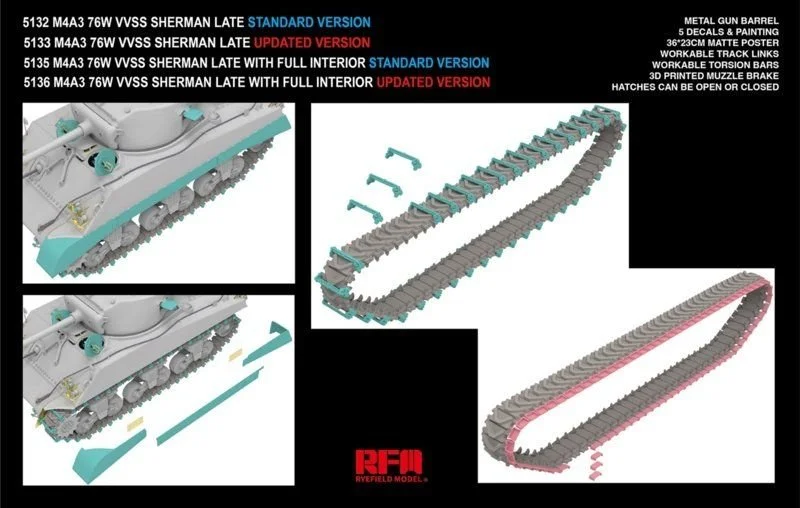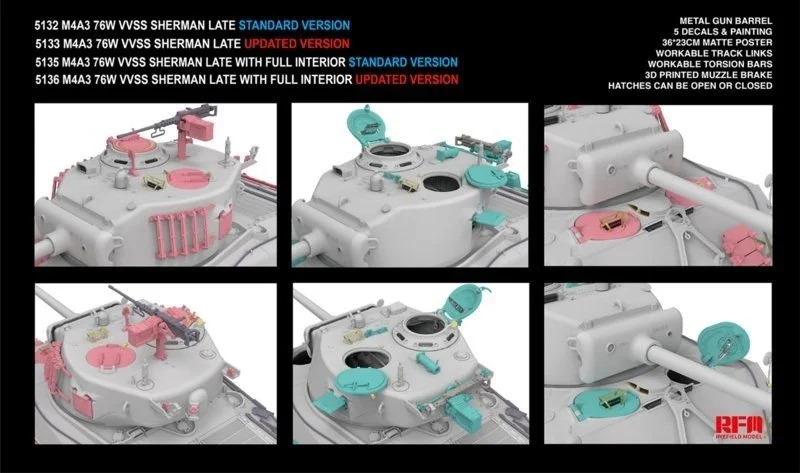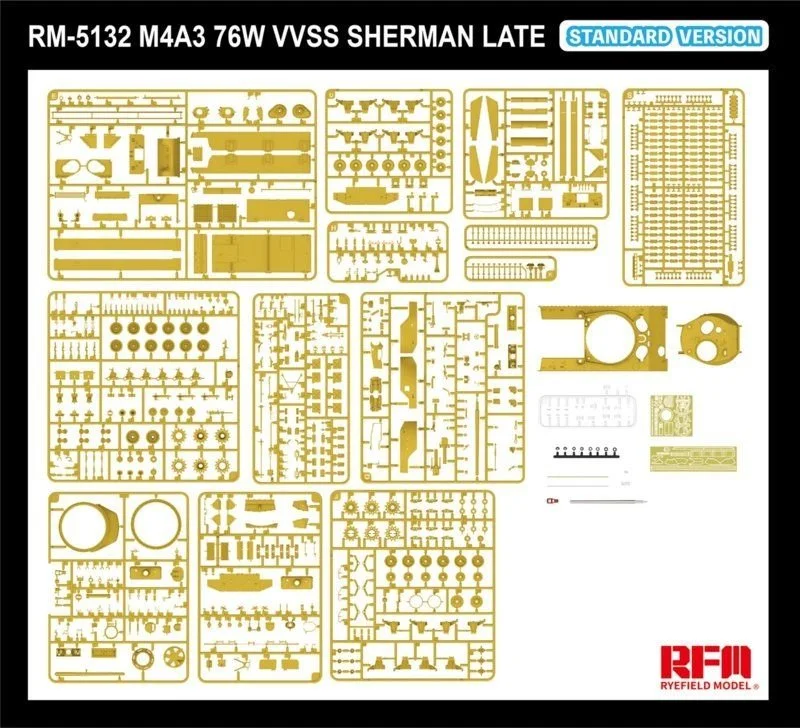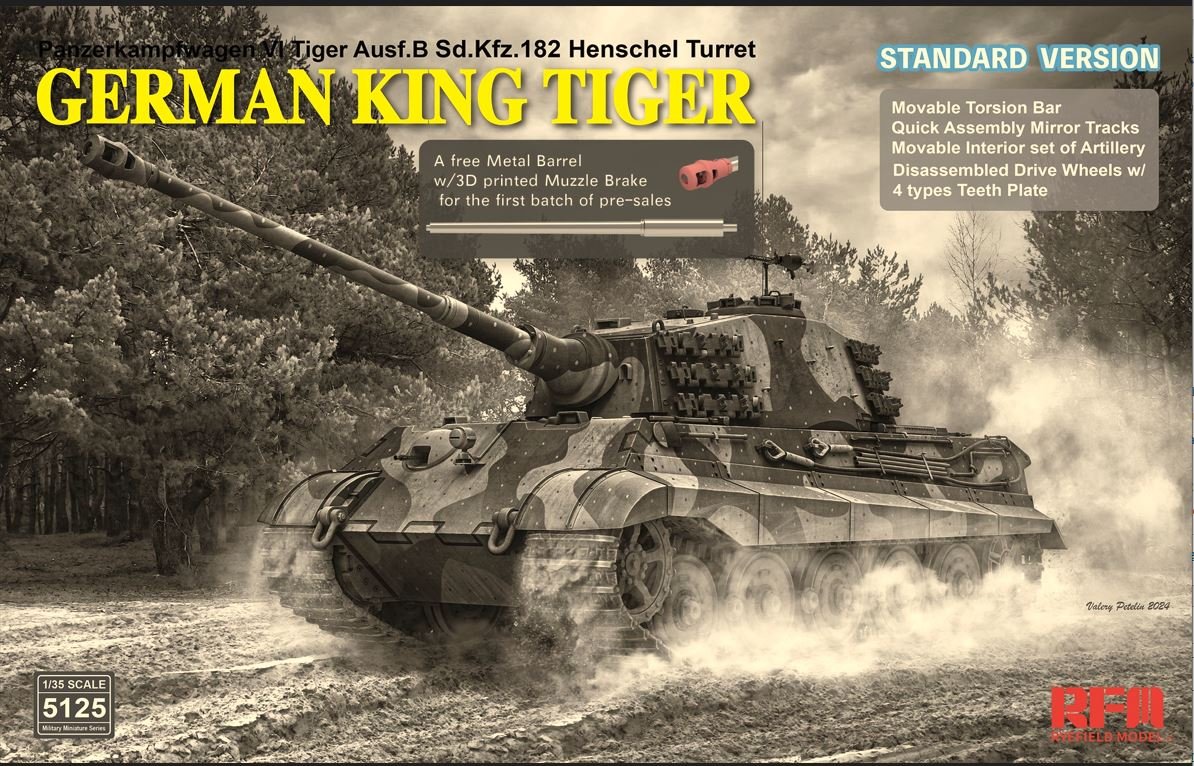 Image 1 of 3
Image 1 of 3

 Image 2 of 3
Image 2 of 3

 Image 3 of 3
Image 3 of 3




Ryefield 5139 Sd.Kfz.181 Pz.Kpfw.VI Ausf.E Tiger 1 Early Wittman 1:35 Model Kit Rye Field Models
Brand New Kit
The kit depicts an early production Tiger I tank, specifically from the Battle of Kursk in 1943. This historically significant tank was a German heavy tank used in World War II, known for its powerful 8.8cm KwK-36 cannon.
Michael Wittmann Figure Included
The Rye Field Models 5139 is a detailed and well-regarded kit for modelers interested in building a historically accurate 1/35 scale Tiger I tank from the Battle of Kursk.
About the Sd.Kfz.181 Tiger 1
The Sd.Kfz.181 Pz.Kpfw.VI Ausf.E Tiger I Early Production as commanded by the famous German tank ace Michael Wittmann.
This specific combination of tank variant and commander is very popular because:
Tiger I: The Tiger I is arguably the most iconic tank of World War II, known for its formidable armor and powerful 88mm gun. Its imposing presence and reputation make it a favorite among modelers.
Early Production: "Early Production" refers to the initial versions of the Tiger I, often distinguished by features like the large cupola, specific engine deck layout, and road wheel arrangement. These early Tigers saw action in significant battles like Kursk.
Michael Wittmann: Wittmann was one of the most successful tank commanders of WWII, credited with a very high number of tank kills. His connection to certain Tiger I tanks, particularly during the Battle of Kursk, makes those specific vehicles historically significant and highly sought after by enthusiasts.
Sd.Kfz.181: This is the Sonderkraftfahrzeug (Special Motor Vehicle) inventory designation. It's the unique identification number given to this specific type of military vehicle by the German ordnance office.
Pz.Kpfw.VI: This stands for Panzerkampfwagen VI, meaning "Armored Fighting Vehicle Mark VI". It places the Tiger I in the lineage of German tank development, following the Panzer III and Panzer IV
Ausf.E: This denotes "Ausführung E" or "Version E". This was the final production designation for the Tiger I. Initially, during development, it was designated Ausf.H (for Henschel, the primary manufacturer), but this was changed to Ausf.E in March 1943
Key Characteristics and Significance:
The Tiger I was a German heavy tank that saw operational duty from late 1942 until the end of the war in 1945. It was a formidable weapon for several reasons:
Formidable Armament: Its primary weapon was the 8.8 cm KwK 36 L/56 gun. This gun was derived from the highly successful 8.8 cm Flak 36 anti-aircraft gun and was capable of penetrating the armor of almost any Allied tank it encountered at typical combat ranges. Its flat trajectory and precision optics (Leitz Turmzielfernrohr TZF 9b/9c) made it exceptionally accurate.
Heavy Armor: The Tiger I featured very thick, although not sloped, armor. Its frontal hull and turret armor was typically 100mm (nearly 4 inches) thick, making it impervious to most Allied anti-tank guns at the time of its introduction. This often led to Allied shells simply bouncing off, instilling a great deal of fear in opposing tank crews.
Psychological Impact: The Tiger I's reputation grew to legendary proportions. Its sheer size, powerful gun, and seemingly impenetrable armor had a significant psychological effect on Allied soldiers. Encountering a Tiger I often necessitated a coordinated effort by multiple Allied tanks or the use of air support to destroy it.
Operational History:
Tiger I tanks were typically deployed in independent heavy tank battalions (Schwere Panzer-Abteilungen) and saw action on all German fronts, including the Eastern Front (where it first saw combat near Leningrad), North Africa (Tunisia), and Western Europe.
Limitations and Drawbacks:
Despite its combat prowess, the Tiger I had several drawbacks:
Over-engineered and Complex: Its design was complex and used expensive materials and labor-intensive production methods, making it difficult and slow to produce. Only about 1,347 were built between August 1942 and August 1944.
Mechanical Reliability Issues: Especially in its early iterations, the Tiger was prone to breakdowns and required significant maintenance. Its interleaved road wheel system, while providing excellent weight distribution, was also susceptible to mud, ice, and snow freezing between the wheels, causing immobilization, particularly on the Eastern Front.
High Fuel Consumption: It was a heavy tank (around 57 tons) and had high fuel consumption, leading to limited operational range.
Difficult to Transport: Its weight and width made it challenging to transport by rail, often requiring special narrow "transport tracks" to be fitted.
Legacy:
Despite its flaws, the Tiger I remains one of the most famous and recognizable tanks in military history. It epitomized the German emphasis on quality and technological superiority in armored warfare and forced the Allies to develop heavier tanks and more effective anti-tank weapons to counter its threat. Today, the most famous surviving example is Tiger 131 at The Tank Museum in Bovington, UK, which is the only running Tiger I in the world
Brand New Kit
The kit depicts an early production Tiger I tank, specifically from the Battle of Kursk in 1943. This historically significant tank was a German heavy tank used in World War II, known for its powerful 8.8cm KwK-36 cannon.
Michael Wittmann Figure Included
The Rye Field Models 5139 is a detailed and well-regarded kit for modelers interested in building a historically accurate 1/35 scale Tiger I tank from the Battle of Kursk.
About the Sd.Kfz.181 Tiger 1
The Sd.Kfz.181 Pz.Kpfw.VI Ausf.E Tiger I Early Production as commanded by the famous German tank ace Michael Wittmann.
This specific combination of tank variant and commander is very popular because:
Tiger I: The Tiger I is arguably the most iconic tank of World War II, known for its formidable armor and powerful 88mm gun. Its imposing presence and reputation make it a favorite among modelers.
Early Production: "Early Production" refers to the initial versions of the Tiger I, often distinguished by features like the large cupola, specific engine deck layout, and road wheel arrangement. These early Tigers saw action in significant battles like Kursk.
Michael Wittmann: Wittmann was one of the most successful tank commanders of WWII, credited with a very high number of tank kills. His connection to certain Tiger I tanks, particularly during the Battle of Kursk, makes those specific vehicles historically significant and highly sought after by enthusiasts.
Sd.Kfz.181: This is the Sonderkraftfahrzeug (Special Motor Vehicle) inventory designation. It's the unique identification number given to this specific type of military vehicle by the German ordnance office.
Pz.Kpfw.VI: This stands for Panzerkampfwagen VI, meaning "Armored Fighting Vehicle Mark VI". It places the Tiger I in the lineage of German tank development, following the Panzer III and Panzer IV
Ausf.E: This denotes "Ausführung E" or "Version E". This was the final production designation for the Tiger I. Initially, during development, it was designated Ausf.H (for Henschel, the primary manufacturer), but this was changed to Ausf.E in March 1943
Key Characteristics and Significance:
The Tiger I was a German heavy tank that saw operational duty from late 1942 until the end of the war in 1945. It was a formidable weapon for several reasons:
Formidable Armament: Its primary weapon was the 8.8 cm KwK 36 L/56 gun. This gun was derived from the highly successful 8.8 cm Flak 36 anti-aircraft gun and was capable of penetrating the armor of almost any Allied tank it encountered at typical combat ranges. Its flat trajectory and precision optics (Leitz Turmzielfernrohr TZF 9b/9c) made it exceptionally accurate.
Heavy Armor: The Tiger I featured very thick, although not sloped, armor. Its frontal hull and turret armor was typically 100mm (nearly 4 inches) thick, making it impervious to most Allied anti-tank guns at the time of its introduction. This often led to Allied shells simply bouncing off, instilling a great deal of fear in opposing tank crews.
Psychological Impact: The Tiger I's reputation grew to legendary proportions. Its sheer size, powerful gun, and seemingly impenetrable armor had a significant psychological effect on Allied soldiers. Encountering a Tiger I often necessitated a coordinated effort by multiple Allied tanks or the use of air support to destroy it.
Operational History:
Tiger I tanks were typically deployed in independent heavy tank battalions (Schwere Panzer-Abteilungen) and saw action on all German fronts, including the Eastern Front (where it first saw combat near Leningrad), North Africa (Tunisia), and Western Europe.
Limitations and Drawbacks:
Despite its combat prowess, the Tiger I had several drawbacks:
Over-engineered and Complex: Its design was complex and used expensive materials and labor-intensive production methods, making it difficult and slow to produce. Only about 1,347 were built between August 1942 and August 1944.
Mechanical Reliability Issues: Especially in its early iterations, the Tiger was prone to breakdowns and required significant maintenance. Its interleaved road wheel system, while providing excellent weight distribution, was also susceptible to mud, ice, and snow freezing between the wheels, causing immobilization, particularly on the Eastern Front.
High Fuel Consumption: It was a heavy tank (around 57 tons) and had high fuel consumption, leading to limited operational range.
Difficult to Transport: Its weight and width made it challenging to transport by rail, often requiring special narrow "transport tracks" to be fitted.
Legacy:
Despite its flaws, the Tiger I remains one of the most famous and recognizable tanks in military history. It epitomized the German emphasis on quality and technological superiority in armored warfare and forced the Allies to develop heavier tanks and more effective anti-tank weapons to counter its threat. Today, the most famous surviving example is Tiger 131 at The Tank Museum in Bovington, UK, which is the only running Tiger I in the world
